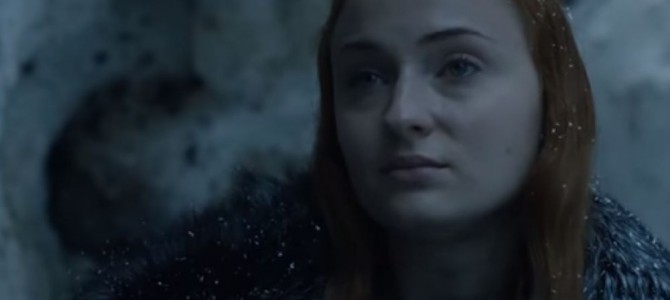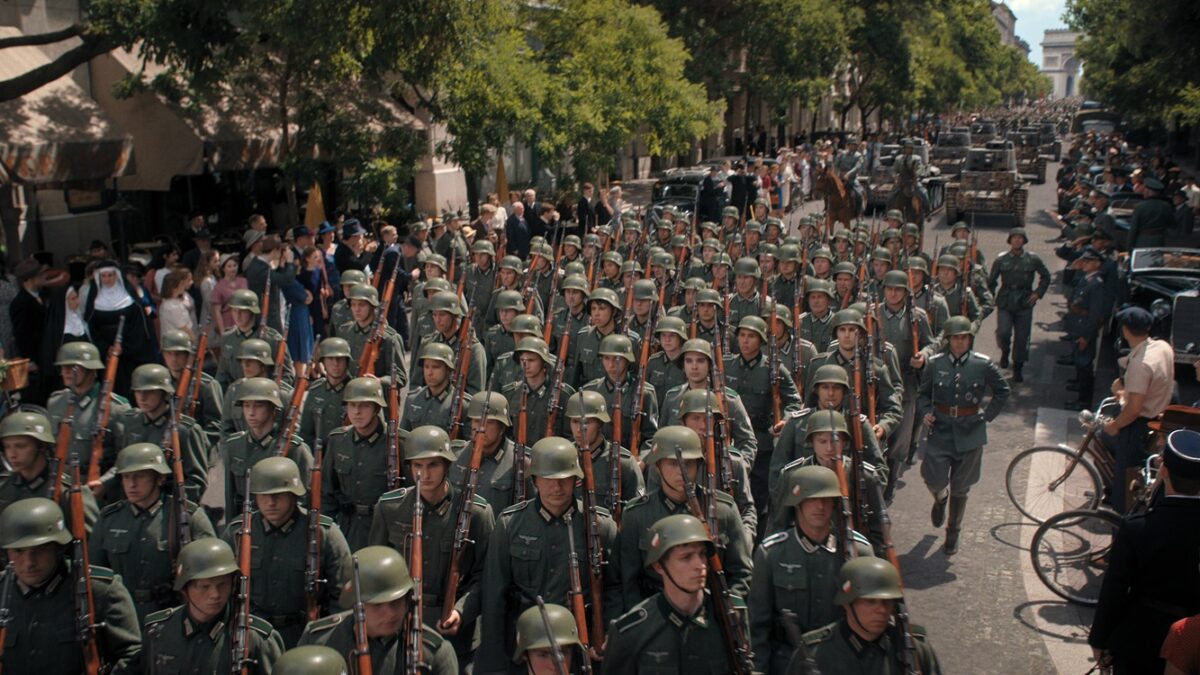
What does it mean to be a lady? For a show that has grappled throughout with issues of government and kingship, and which ended last season with Cersei Lannister mounting the Iron Throne as Queen Regnant, “Game of Thrones” has failed to address this question. This background makes the ascension of Sansa Stark in the latest season a refreshing addition not only to the scheming world of Westeros, but to pop culture at large.
Through the series, the eldest Stark daughter has passed through the flames of political intrigue and emerged as a unique voice of feminine strength. That is more rare than it might seem.
Although a series that has prided itself on its “strong women,” “Game of Thrones” shows a surprising lack creativity in how it depicts them. As the show has developed, its female characters have suffered more and more from lazy writing. In the capitol, it seems that a new woman cycles in each season to play the role of seductress, using revealing clothing and offers of sex to scrabble for power. Others, women like Queen Cersei, Lady Catlin Stark, and even the Queen of Thorns, appear as devoted protectors of their children who are largely pushed aside when it comes time for the real politics to begin.
With young women, HBO is as guilty as most movies and books, translating “strength” into martial skill. Rather than projecting strength, the effect is to turn otherwise-sympathetic characters, like Arya Stark, into half-developed revenge-focused murderesses. In just the past season, the trope of androgynous warrior princess describes a long list of characters: Arya, Daenerys, Yara Greyjoy, and Elaria Sand and her daughters, the “Sand Snakes.” Despite their differing backgrounds, they are all the same—women struggling to be taken seriously by throwing themselves into worlds of masculine violence.
A Feminine Woman of Strength
Enter Lady Sansa Stark, the woman to don a mantle of uniquely feminine strength. Life hasn’t been easy for this young noblewoman. She has watched her father’s execution and the destruction of her family, been raped, and was stolen away and suffered abuse at the hands of two different husbands. But she has grown. The series has shown her developing from a naive teenage girl dreaming of handsome knights and fairytale endings into a woman steeled by circumstances, uniquely confident in herself. How rare it is to see a woman unarmed and unafraid.
Both noble and single, her authority comes from her own identity, not from her role as a wife or mother. As she says at one point, “I am Sansa Stark of Winterfell. This is my home. And you can’t frighten me.”
Of all of the women in the series, she never expresses a desire to change her sex. She never even wears pants. Instead, she fully embraces her role as a counselor, an advisor, the last survivor of a once-great house. Unlike her half-brother Jon Snow, she cannot afford to live in a world of principles alone. Instead, she has learned to use the tools at hand to protect herself against vile enemies.
This character arc reached a dramatic conclusion in the long-awaited “battle of the bastards” at the end of this season. At long last, the Starks retook their ancestral home in a long-awaited climactic battle, leading to the just death of the much-maligned Ramsay Bolton. In this battle, Lady Sansa wears no armor and gives no rousing speeches. Although she watches, the role of warrior is not hers. Yet she wins the day. Her decision to call to the Knights of the Vale for help makes use of the relationships she has developed and shows an awareness of situations Jon Snow wished to overlook. The field was won and Lady Sansa, ever reserved, cracked the slightest trace of a smile.
A Future of More than Survival
Although battle is over, the war is long and two seasons yet remain. Looking forward, Lady Sansa sits beside Jon Snow, the new King in the North, poised to take on an ever-more-important role in rebuilding this shattered kingdom. Much of the plot of “Game of Thrones” displays the struggle for the immediate future—to live another day, to survive to fight the next battle. Few characters look beyond that to what the world will look like after the victory has been won. Having passed into barbarism, the kingdom will need to find a way back into civilization. Sansa, who clings to standards of propriety and tradition even amidst destruction and chaos, is one of the only characters to show how this future might be shaped.
At the start of this season, she accepted the sworn fealty of Lady Brienne of Tarth, a lady knight who had vowed to protect Sansa’s mother. The oath is taken in the middle of a snowy wood, where Sansa owns literally the clothes on her back. Yet she says the words. At this moment, tradition is the only thing she has. Tradition has long been a tempering theme in the series, a means of constraining the passions of desperate characters. Having had to live in a hostile court, Sansa has learned the strength of propriety and tradition in a way that no other characters really have.
Last season ended with Sansa vowing she will hold on to her own identity above all else. No faceless, nameless girl, she promises that, “If I’m going to die, let it happen while there is still some of me left.” Thankfully for all involved, there is plenty of Lady Sansa left.









